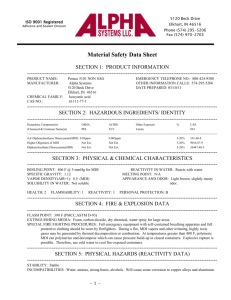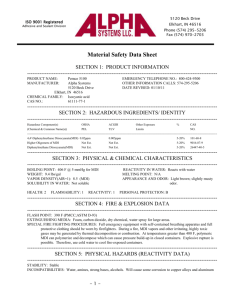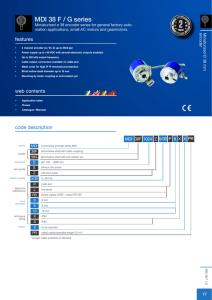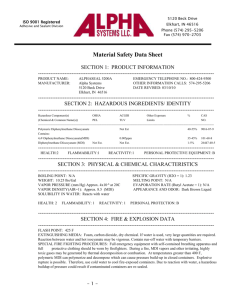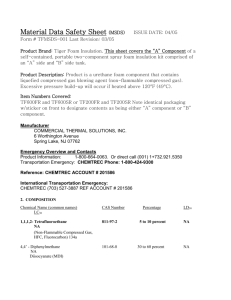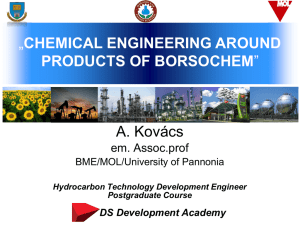(MDI) and Metals by XPS
advertisement
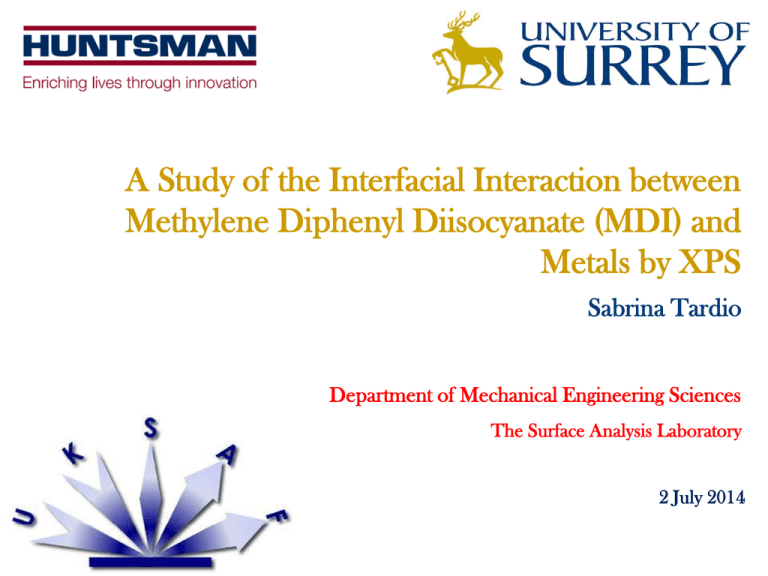
The Surface Analysis Laboratory A Study of the Interfacial Interaction between Methylene Diphenyl Diisocyanate (MDI) and Metals by XPS Sabrina Tardio Department of Mechanical Engineering Sciences The Surface Analysis Laboratory 2 July 2014 Project Aim The Surface Analysis Laboratory Interface interaction MDI In order to understand the adhesion of PU on metal substrates. • Stainless steel (316L) • Iron • Molybdenum • Nickel • Chromium Isocyanate Reactivity The Surface Analysis Laboratory • 𝐑 − 𝐍𝐂𝐎 + 𝐇𝟐 𝐎 → 𝐑 − 𝐍𝐇 − 𝐂𝐎𝐎𝐇 → 𝐑 − 𝐍𝐇𝟐 + 𝐂𝐎𝟐 • 𝐑 − 𝐍𝐂𝐎 + 𝐑 − 𝐍𝐇𝟐 → 𝐑 − 𝐍𝐇 − 𝐂𝐎 − 𝐍𝐇 − 𝐑 • 𝐑 − 𝐍𝐂𝐎 + 𝐑𝐈 − 𝐎𝐇 → 𝐑 − 𝐍𝐇𝐂𝐎𝐎𝐑𝐈 Stainless steel surface is made of metal oxide, metal hydroxide and adsorbed water. 𝐑 − 𝐍𝐂𝐎 + 𝐌 − 𝐎𝐇 → 𝐑 − 𝐍𝐇𝐂𝐎𝐎𝐌 This is our research imperative! C1s High Resolution Spectra The Surface Analysis Laboratory Pure MDI 1 1 Steel (with carbon contam.) 1 2 4 3 1 1 New peak indicate the formation of a M-C bond: Organometallic complex?? Interface: 3 nm of MDI on stainless steel C1s N=C=O Region Pure MDI Pure MDI The Surface Analysis Laboratory Interface Steel (with carbon contam.) MDI/Pure Fe: C1s The Surface Analysis Laboratory Interface MDI/Fe: «carbidic» peak MDI/Mo and MDI/Ni : no «carbidic» peak but interaction between with nitrogen!!! Conclusions The Surface Analysis Laboratory MDI/Steel and MDI/Fe interfaces: • M-C interaction Peak at 283.6 eV • Formation of Peak at 289.2 eV MDI/Mo and MDI/Ni interfaces • M-N interaction New doublets in the metal peaks (see poster!)

